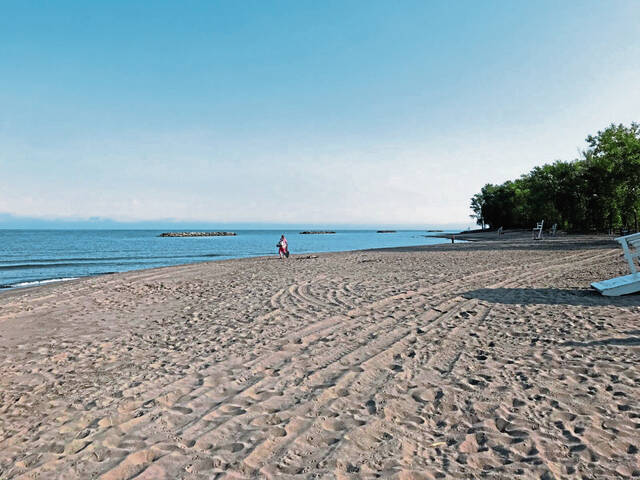https://triblive.com/local/regional/bacteria-risks-found-at-all-lake-erie-beaches-in-pennsylvania-report-says/
Bacteria risks found at all Lake Erie beaches in Pennsylvania, report says

Health risks were found at all of Lake Erie’s Pennsylvania beaches last year, a new report says.
The beaches tested in 2024 were found to be potentially unsafe for swimming on at least one day, according to the PennEnvironment Research & Policy Center’s latest analysis of bacteria testing titled “Safe for Swimming?”
PennEnvironment is cautioning visitors as they enjoy Lake Erie’s beaches this summer — warning that “more work is needed to ensure that all waters are safe for swimming.”
Pennsylvania has about 77 miles of coastline on Lake Erie.
“Even as local residents are back to enjoying the fresh breeze and splash of waves at Lake Erie’s beaches, pollution is still plaguing too many of the places where we swim,” said David Masur, executive director for the PennEnvironment Research & Policy Center. “Now is the time to fix our water infrastructure and stop the flow of nasty bacteria and pollution to our beaches.”
Beach safety
All eight of the Lake Erie beaches in Pennsylvania exceeded the U.S. Environmental Protection Agency’s most protective “Beach Action Value” safety threshold on at least one day tested last year.
The popular Beach 11 at Presque Isle had higher bacteria levels on 56% of days tested — more than any other beach. Other beaches found potentially unsafe for swimming at least once last year include: Presque Isle’s Beach 1, Beach 3 (Barracks Beach), Beach 6, Beach 8 (Pettinato Beach), Beach 9 (Pine Tree Beach), Beach 10 (Budny Beach) and Freeport Beach.
The EPA’s “Beach Action Value” is associated with an estimated illness rate of 32 out of every 1,000 swimmers. PennEnvironment’s testing examined whether fecal indicator bacteria levels exceeded the “Beach Action Value.”
Multiple beach closings happened in July at Presque Isle on Lake Erie due to high E. coli levels, and Congress is currently considering funding for the main federal program to stop sewer overflows and runoff pollution.
There are an estimated 57 million instances of people getting sick annually nationwide from swimming in polluted waters, including nausea, diarrhea, ear infections and rashes, according to scientists.
Sewage and runoff pollution are the common sources of bacterial contamination at beaches, PennEnvironment said.
Masur said when Congress passed the Clean Water Act more than 50 years ago, the United States resolved it would make all of its waterways safe for swimming.
PennEnvironment’s report recommends “major investments” to stop sewage overflows and runoff pollution.
“It is time for Pennsylvania officials to commit themselves to that goal and dedicate the resources needed to achieve it,” he said.
Copyright ©2025— Trib Total Media, LLC (TribLIVE.com)
